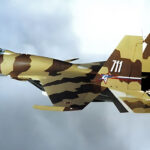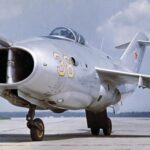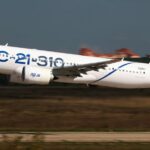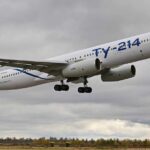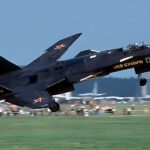On 15 October 1940, the first flight of a prototype of the high-speed long-range bomber DB-4 took place. The machine was flown by Ilushin Design Bureau test pilot Vladimir Kokkinaki.
Soviet bombers SB and DB-3, created in the first half of the 1930s, by the end of the decade no longer met the demands of the Air Force in terms of flight speed and therefore, when organising the serial production of the long-range bomber DB-3F, the design bureau of Sergei Ilushin intended to improve its speed and altitude characteristics by installing new engines M-89, thanks to an increase in compression ratio and supercharging, the nominal power of which at an altitude of 6000 m was 1300 hp. With these engines, the DB-3F could have a maximum flight speed of 485-500 km/h at its design altitude.
However, by June 1941, the M-89 engines had not been brought to the stage of serial production, and on the agenda was the creation of a machine capable of carrying 1000 kg of bombs at a range of 4000 km and a speed of 550 km/hour. Work on such a bomber was launched in several design bureaus. In parallel, the design bureaus of V.Ya Klimov and A.A. Mikulin were tasked to create liquid-cooled engines with a take-off power of 1800-2100 hp and a rated power of 1500-1700 hp. This task was solved by adding to the already proven design of 12-cylinder twin-block V-shaped engines M-105 and AM-35 a third block of six cylinders, which was located under the main cylinder blocks, forming the so-called “Y” (Y-scheme).
Engines made according to the Y-scheme, allowed constructively simple enough and quickly achieve a given power, but they had significant disadvantages: a large midsection, increasing their drag in flight, and a significant weight. The engine developed by the Klimov Design Bureau was designated M-120, and the engine developed by the Mikulin Design Bureau – AM-36. However, they could not be completed, so the DB-4 was equipped with the AM-37 engine developed by Alexander Mikulin.
In parallel with the development of the AM-36 engine, the Mikulin Design Bureau worked on the AM-37 – a high-altitude 12-cylinder liquid-cooled engine of the conventional V-shaped scheme with a rated power of 1400-1450 hp at an altitude of 5800 metres. Its main feature was the cooling of compressed and heated air coming out of the drive centrifugal blower before supplying it to the cylinders, which helped to increase the efficiency of the thermodynamic cycle and increase the engine power. Cooling of this air was to be carried out in a special water radiator.
The long-range bomber DB-4 had the factory designation TsKB-56 and was developed for M-120 engines, but at the earliest design stage it was also envisaged that the aircraft could be fitted with AM-37 engines, which, due to difficulties encountered during the development of the M-120, were fitted with the prototype DB-4.

Significant improvement of the bomber’s speed data could be achieved both by installing new, more powerful engines and by improving the aerodynamic perfection of the aircraft. The need to equip the fuselage with a compartment to accommodate bombs of large mass and the desire to obtain high aerodynamic quality led to the choice for the DB-4 scheme of a high-plane with a wing of moderate elongation. The increase of the maximum take-off weight of the aircraft to 13,000 kg required the design of a larger wing area than that of the DB-3F while maintaining the specific wing load of 150 kg/m².
High cruising speed and strict requirements for take-off and landing characteristics determined the layout of the DB-4 wing of different in its load-bearing properties of aerodynamic profiles, which had increased relative concavity at the end of the wing, which allowed to delay the occurrence of flow stall to large angles of attack, to improve in these conditions, the work of transverse controls and increase the value of the maximum coefficient of lift of the wing. Compared to the DB-3F, the new machine had an aerodynamic quality of 17 versus 15.
The defensive armament of the DB-4 aircraft remained the same as on the DB-3F, and on the first prototype it consisted of three SHKAS machine guns: the front one with 500 rounds of ammunition, the upper rear one on the MB-3 turret with 2000 rounds of ammunition, which in series production was supposed to be replaced by an installation of two twin SHKAS machine guns, and the lower hatch machine gun with 500 rounds of ammunition. The crew of the new DB-4 was increased and consisted of four people – a pilot, navigator, gunner-radiator and an air gunner who operated the lower hatch machine gun.
The first flight on 15 October 1940 revealed low track stability and insufficient torsional rigidity of the fuselage due to the presence of a large cutout for the bomb bay. Both shortcomings were eliminated by increasing the area of the vertical plumage and installing on the outer skin of the fuselage four (two on each side) heavy-duty spars of pressed trough-shaped section.
At the end of November 1940, the second prototype was built. The tests achieved encouraging results, but the Great Patriotic War, which began soon after, radically changed the priorities: it was necessary to increase production of serial Il-2 and Il-4, and the DB-4 project was closed. The Design Bureau began work on the IL-6 bomber with ACh-30B diesel engines, but this project was not realised.

